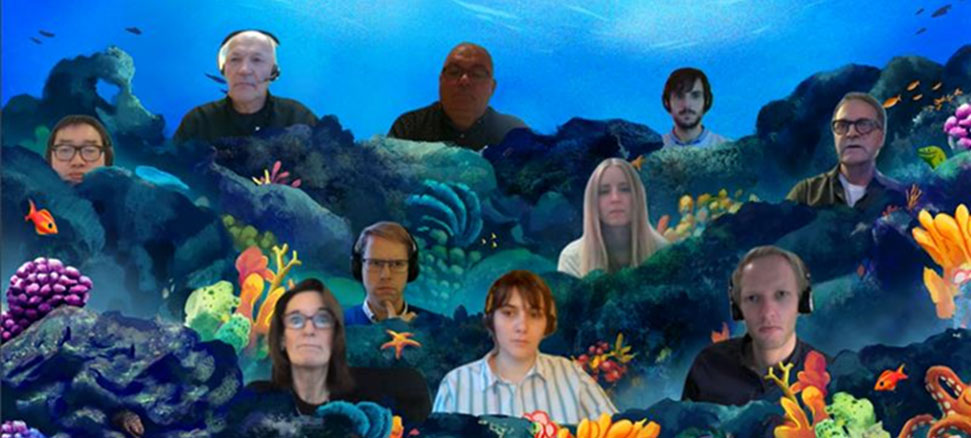CruiZE – Cruising towards Zero Emissions – is a collaborative project between SINTEF, NTNU, the world’s largest cruise line operator, Carnival Corporation & plc, and Norwegian suppliers of design solutions and equipment to the cruise ship industry. The goal is to develop energy-efficient technologies towards a more environment-friendly cruise industry.
- Find out more about CruiZE
Sharing results
After only two months in operation, the CruiZE project staged on December 16 a 3-hour Teams webinar with focus on results. The webinar had close to 40 participants, and more than half represented the five industry partners. The webinar was well-received by the partners.
The KSP project CruiZE, led by SINTEF Energy Research, was granted funding from the Research Council of Norway in December 2019. The Corona-19 pandemic, however, hit the cruise industry hard from the very beginning, and it soon became evident that the partners (understandably!) had more pressing issues on hand than developing new knowledge and technology for future generations of vessels. The project start was consequently postponed, but through intense efforts and communication activities with the partners, the Consortium Agreement was signed on October 15. This meant that research activities commenced in the second half of October 2020.
Even with the short project period this year, a goal was set early to present to the partners our findings in the form of a webinar by the end of 2020. Such a meeting was important not only to present our results, but also to spur a discussion with the partners and to receive feedback to what we had done.
The webinar had the following agenda (presenters in parentheses) and the following highlights:
- Welcome (Petter Røkke, Cecilia Gabrielii – both SINTEF).
- The addresses highlighted the much-appreciated partner contributions in realising the CruiZE project and the strategic importance of the project for SINTEF and NTNU.
- Presentation of the reference ship (Sverre Foslie, Espen Halvorsen Verpe – both SINTEF).
- The LNG powered cruise ship was described, together with a methodology for estimation of available surplus heat and visualization of energy flows.
- HVAC&R – Potential of natural refrigerants (Christian Schlemminger – SINTEF, Larissa Schaan – NTNU).
- Possible applications and integration opportunities were discussed. It was shown that the natural refrigerant CO2 can offer comparable energy efficiency to that of “conventional” refrigerants, and more compact units.
- Surplus heat to power – a case study (Trond Andresen, Monika Nikolaisen, Chao Fu – all SINTEF).
- An explanation was given of pros and cons with different technologies for utilising waste heat for power production. Main considerations were exemplified with a case study, also showing opportunities for increased technology efficiency on LNG powered ship.
- LNG cold utilisation (Muhammad Zahid Saeed, NTNU).
- The amount of surplus cold available from the LNG fuel was shown, and alternative system layouts for utilization.
- Opportunities for integration of thermal storage with PCMs (Ángel Álvarez Pardiñas, SINTEF).
- Several applications for hot and/or cold storage were presented, enabling reduction in the energy consumption of, e.g., chillers and boilers. Also, advantages with using thermal storage based on Phase Change Materials (PCMs) were explained.
- Dynamic simulation models – potential and examples (Daniel Rodhe, SINTEF).
- Benefits were shown from using Modelica models for analysis, design, and control of a ship’s dynamic energy system.
- Summary & thoughts about 2021 (Petter Nekså, Sigurd Sannan – both SINTEF).
- Concluding remarks were given about the relevance of the project results, collaboration opportunities/synergies with other projects and the optimism for the continuation of the project.
Despite difficult times for the cruise industry, the five industry partners were highly present at the webinar with 20 participants. This included four of the top managers at Carnival Corporation, the world’s largest cruise line operator.

Time was devoted after each presentation to discussions, and industry partners spent this time actively with questions and comments providing very useful feedback to the project researchers.
At the end of the webinar several of the industry participants expressed their great satisfaction with the meeting – stating both that this was far beyond expectations, and that this was one of the best webinars they had attended.
Cecilia Gabrielii, Project Manager, concluded after the webinar:
– It was extremely encouraging that the partners found it worthwhile to attend the meeting with so many participants. I was also very pleased that we, despite a very condensed working period, obviously managed to present results that spurred interest in our partners. We are totally aware that these are trying times for the cruise industry, and that they have many pressing issues on their table.
Presentations from the webinar is available to the project partners on SharePoint.
Consortium partners are:
Carnival Corporation, Kongsberg Digital, Teknotherm Marine, Ulmatec Pyro, Vard Design, NTNU, SINTEF


Pingback: Thermal storage and heat pumps: a step towards zero-emission cruise ships - #SINTEFblog